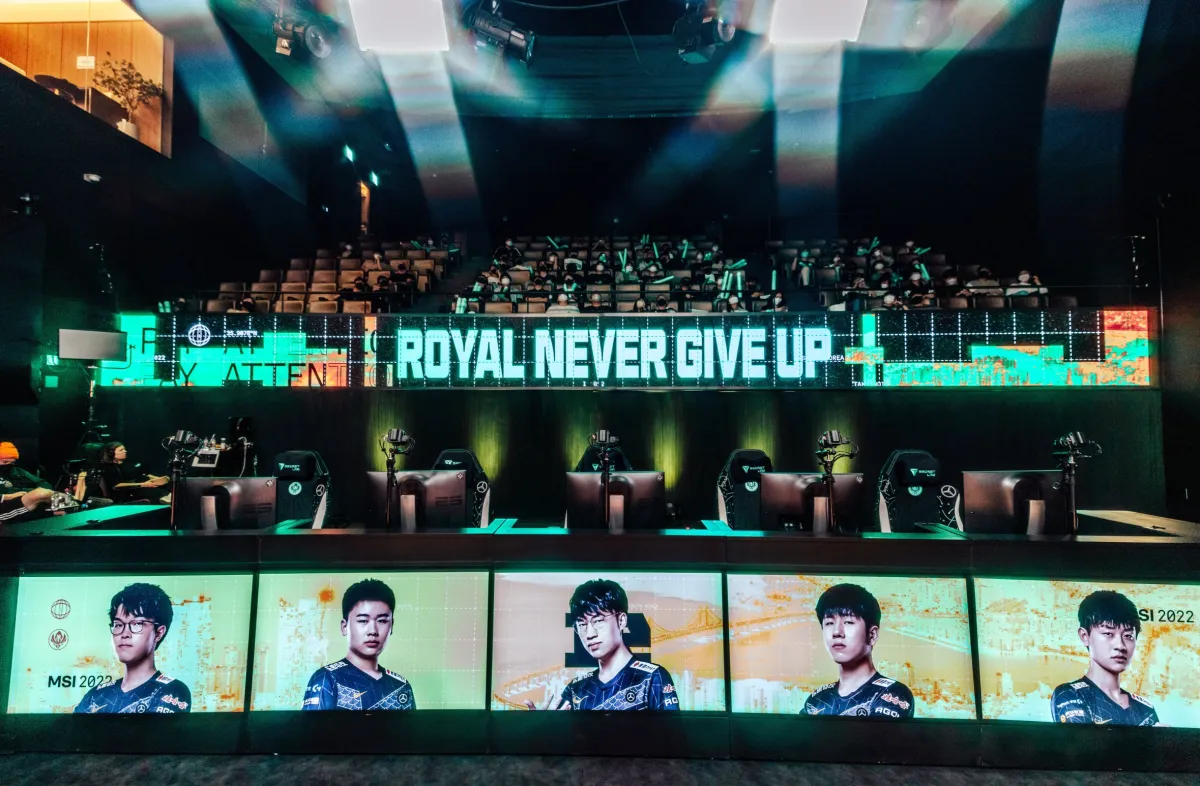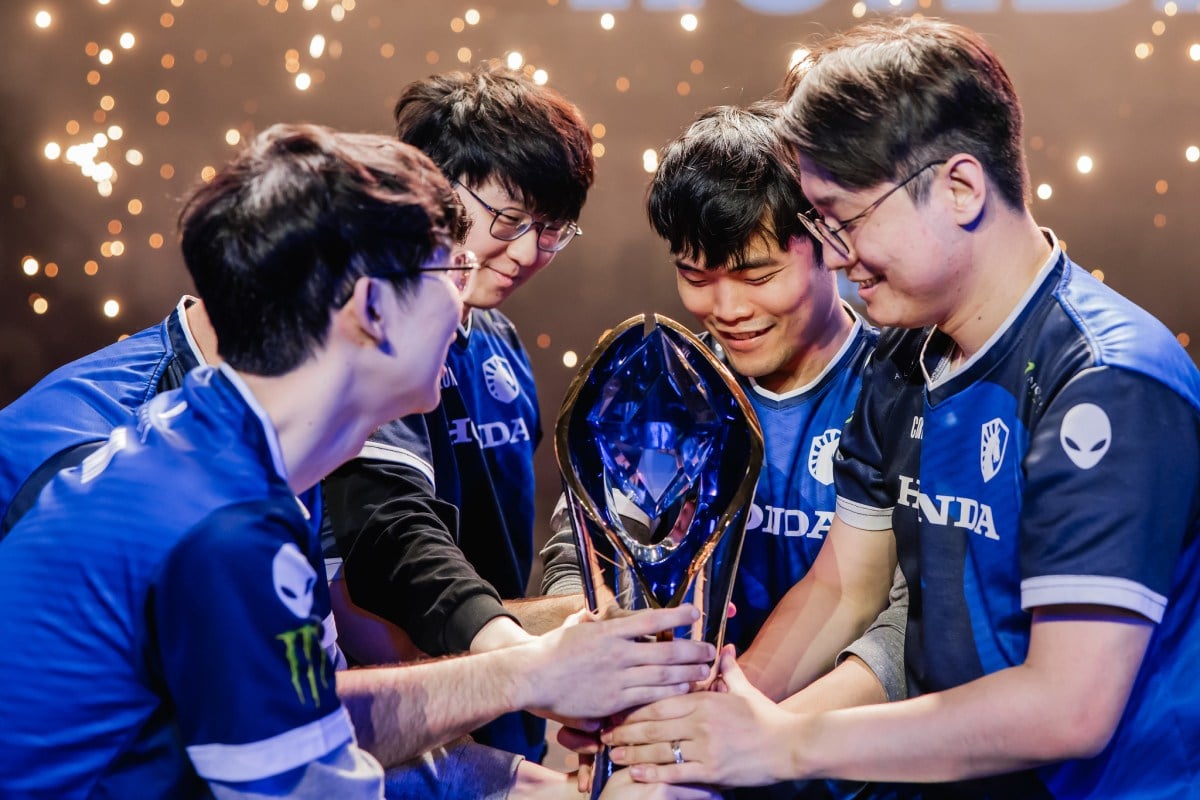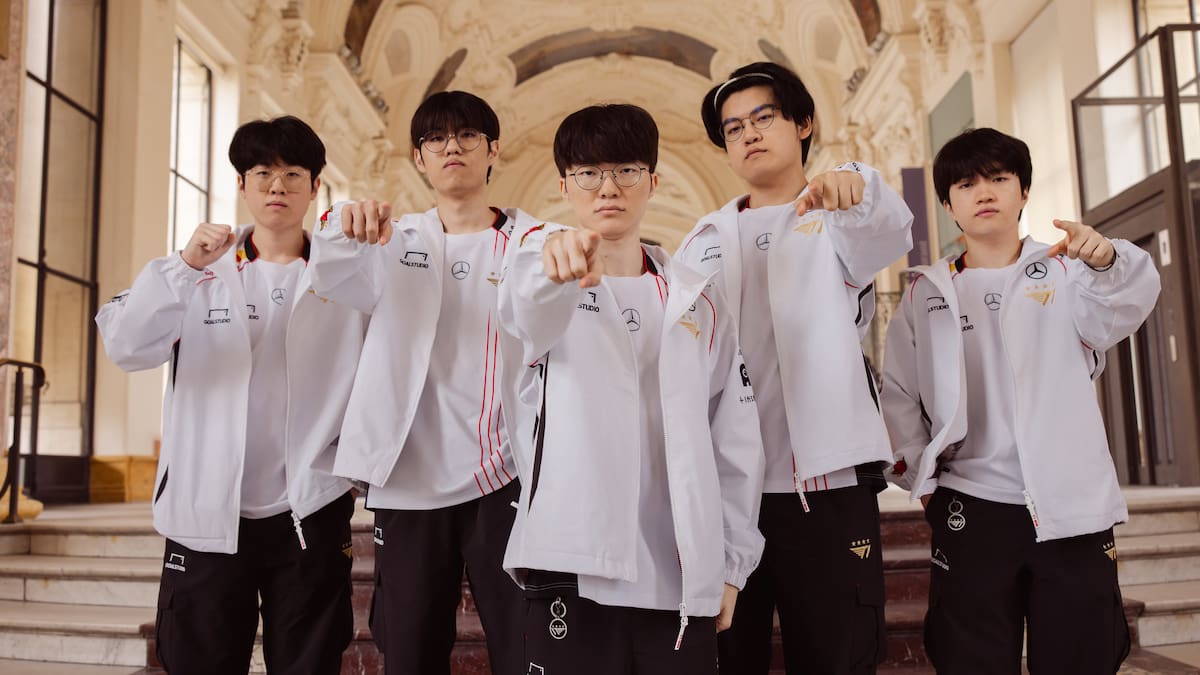Riot Games has revealed in full how the artificial ping system at this year’s League of Legends Mid-Season Invitational works and why the system did not work as intended through the first three days of the tournament in a tech-focused blog post published earlier today.
At this year’s MSI, the Chinese representative from the LPL, Royal Never Give Up, is competing in the tournament remotely due to pandemic-related travel constraints. Since there is a natural latency difference between games including RNG and games played in-house at the MSI venue in Busan, South Korea, Riot implemented a software known as the “latency service tool” to place every player at the tournament’s ping at approximately 35 milliseconds. This tool is meant to ensure that every player at MSI plays with the same latency, regardless of where they’re playing from.
On May 13, however, Riot discovered that there had been a “discrepancy in latency” between the players participating remotely in China and the players in Busan. Riot then made the decision to have RNG replay the three games that had been affected by this bug to maintain competitive integrity.
“While the players in China were playing with 35 ms ping, the ping for the players in Busan was higher,” Riot said. “Unfortunately, the issue was not discovered before the start of the event. The reason we did not find it sooner is that the cause of the issue was a code bug that miscalculated latency, which meant that the values in our logs were also wrong. As a result, our ongoing monitoring and pre-event testing showed everything was working correctly, even though it was not.”
Prior to the event, Riot considered its options. After throwing out scenarios where each team played with their natural latency, and another scenario where the MSI servers would be placed directly between China and Korea, the esports tech team made the decision to introduce artificial ping. Forty milliseconds is the highest latency for League “to be considered viable at the highest competitive level,” according to Riot.
After the first day of games at MSI 2022, players at the tournament reported back to Riot claiming that their in-game latency felt higher than 35 milliseconds, forcing Riot’s esports tech team to go back to their logs to make sense of the issue. Additionally, Riot conducted several experiments to internally test its latency values to find out why players would be experiencing higher ping than 35 milliseconds.
Related: Danny talks about EG’s tough start at MSI 2022 and the 35 ping debacle
After testing the effectiveness of the latency service tool, Riot found that although it had achieved a stable 35 milliseconds environment for players in China, the teams back in Busan were playing with latency values between approximately 50 and 55 milliseconds.
After making this discovery, the decision to replay RNG’s first three games of the tournament was made. RNG posted on social media following the decision to express its concerns over the way the tournament has been conducted, the timing of Riot’s decision, and the “unfair treatment” it’s received at MSI thus far.
Despite the replaying of RNG’s games, the team still finished the group stage of MSI with an undefeated record, advancing to the next phase of the tournament with ease.
Riot’s tech team apologized for the “disruption and frustration caused during the tournament” in its blog post and said the team is continuing to run tests to ensure that the remainder of MSI runs more smoothly than its initial stage.
“Striving to create a level playing field for pro teams will always be a top priority,” Riot said of the situation. “Our goal is to have the tech get out of the way and have the sport and the gameplay take center stage.”
MSI will continue on Friday, May 20, when the rumble stage begins.







Published: May 17, 2022 09:50 am